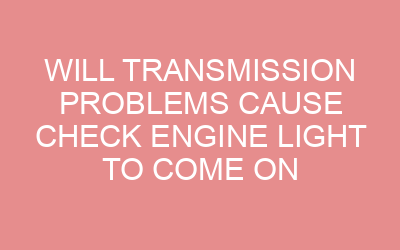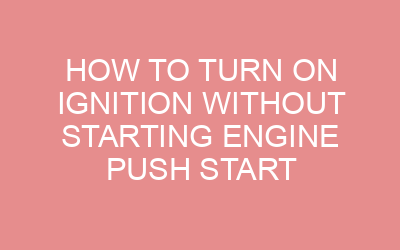To fix blow-by in a gas engine, start by checking and replacing worn piston rings and valve stem seals. Then, clean or replace the PCV valve and ensure the engine is not being overfilled with oil, as excess oil can contribute to blow-by issues.
Additionally, consider performing a compression test to identify any potential internal engine problems. Blow-by is a common issue in gas engines, but with these steps, you can effectively address and resolve the problem.
Blow-by in a gas engine can be a frustrating issue, causing decreased performance and potential damage to the engine.
However, by understanding the steps to remedy this problem, you can effectively address it and prevent further complications.
We will discuss the exact methods to fix blow-by in a gas engine, providing you with the information needed to tackle this issue head-on.
Whether you’re a car enthusiast or a professional mechanic, knowing how to resolve blow-by can help maintain the health and functionality of your gas engine.
What Is Blowby
Blow-by in a gas engine occurs when combustion gases leak past the piston rings into the crankcase, causing increased oil consumption and decreased engine performance. To fix blow-by, you can try using a high-quality engine oil with lower viscosity, installing a catch can, or replacing the worn piston rings and seals.
These steps can help reduce blow-by and restore optimal engine function.
Blowby is a common issue in gas engines where combustion gases escape past the piston rings into the crankcase. This escape of gases leads to several problems that could affect the engine’s performance and longevity.
Causes Of Blowby
- Worn piston rings: Over time, the piston rings can wear out, causing gaps that allow the combustion gases to escape.
- Cylinder wear: If the cylinder walls become worn or glazed, it can lead to increased blowby.
- Overpressure in the crankcase: Excessive pressure in the crankcase can force the gases past the piston rings.
Effects Of Blowby
- Reduced engine power: Blowby can cause a drop in engine power due to the loss of combustion gases.
- Increased oil consumption: The escaped gases can contaminate the oil, leading to increased oil consumption.
- Higher emissions: Blowby can result in increased emissions as unburned fuel and gases are released.
How To Identify Blowby
- Oil consumption: Excessive oil consumption could indicate blowby as the gases contaminate the oil.
- Crankcase pressure test: A crankcase pressure test can help identify excessive pressure, indicating blowby.
- Loss of power: A noticeable loss of power could be a sign of blowby in the engine.
How To Fix Blow-by In A Gas Engine
To fix blow-by in a gas engine, start by checking for worn piston rings, valve seals, or a PCV system issue. Clean or replace any faulty components and conduct a compression test to ensure proper functioning. Performing regular maintenance can help prevent blow-by issues in the future.
Understanding Blow-by In A Gas Engine
Blow-by in a gas engine occurs when combustion gases leak past the piston rings into the crankcase, leading to decreased engine performance.
It’s essential to address this issue promptly to prevent further damage. Below are some effective methods to fix blow-by in a gas engine.
Replacing The Piston Rings:
- Inspect and assess the condition of the piston rings for wear and tear.
- If damage is detected, replace the piston rings with high-quality, compatible replacements to ensure a proper seal within the cylinder walls.
Checking The Pcv System:
- Ensure the Positive Crankcase Ventilation (PCV) system is functioning optimally.
- Clean or replace the PCV valve to maintain proper ventilation and pressure control within the engine.
Using An Engine Oil Additive:
- Select and apply a suitable engine oil additive designed to improve the sealing capability of the piston rings.
- Follow the manufacturer’s instructions for the correct application and dosage of the additive.
Inspecting The Cylinder Head Gasket:
- Inspect the cylinder head gasket for any signs of wear, leaks, or damage.
- Replace the cylinder head gasket if necessary, ensuring a proper seal to prevent blow-by.
Performing A Compression Test:
- Conduct a compression test to identify any issues with cylinder compression.
- Address any discrepancies found by performing necessary repairs or adjustments as per the test results.
By following these steps, you can effectively tackle blow-by in your gas engine. Regular maintenance and timely addressing of issues can contribute to the longevity and optimal performance of your engine.
What Causes Blow-by In A Gasoline Engine?
Blow-by in a gasoline engine is caused by worn piston rings, cylinder wall damage, or excessive crankcase pressure. To fix blow-by, consider replacing the piston rings, repairing the cylinder wall, or installing a crankcase ventilation system to reduce pressure. Regular maintenance can also prevent blow-by issues.
Blow-by in a gasoline engine is caused by several factors, which can lead to decreased engine performance and increased emissions. Understanding the root causes of blow-by is crucial for ensuring the proper functioning of the engine. Below are the main reasons behind blow-by in a gasoline engine:
- Worn Piston Rings: The wear and tear of piston rings can result in inadequate sealing between the piston and cylinder wall, allowing combustion gases to escape into the crankcase.
- Cylinder Wall Damage: Any damage to the cylinder walls, such as scoring or excessive wear, can lead to inadequate sealing and contribute to blow-by.
- Valve Guide Wear: Wear and tear of the valve guides can cause excessive clearance, leading to improper sealing of the combustion chamber and increased blow-by.
- Excessive Crankcase Pressure: Increased pressure within the crankcase, often due to a malfunctioning PCV (Positive Crankcase Ventilation) system, can force combustion gases past the piston rings, resulting in blow-by.
- Overheating: Engine overheating can cause piston rings to lose their elasticity, leading to decreased sealing and increased blow-by.
Understanding these causes is essential for diagnosing and fixing blow-by issues in a gasoline engine. Identifying the specific underlying factors can guide the appropriate remedial actions to restore optimal engine performance.
Is Blow-by Bad On The Gas Engine?
Blow-by in a gas engine can be harmful as it contributes to increased oil consumption, reduced engine performance, and emission of smoke. To fix blow-by, consider replacing worn-out piston rings, using high-quality engine oil, and ensuring proper engine maintenance to prevent the issue.
Blow-by in a gas engine can raise concerns about its impact on the engine’s performance and longevity. Let’s delve into the specifics and find out if blow-by is detrimental to a gas engine.
Understanding Blow-by In A Gas Engine:
- Blow-by, in a gas engine, occurs when combustion gases leak past the piston rings into the crankcase.
- This can result in decreased engine efficiency and increased oil consumption.
- Furthermore, blow-by can lead to a buildup of sludge and varnish, potentially causing damage to the engine components.
Determining The Severity Of Blow-by:
When assessing blow-by in a gas engine, consider the following key points:
- The severity of blow-by is influenced by factors such as the engine’s age, maintenance history, and driving conditions.
- Excessive blow-by can indicate worn piston rings or cylinder walls, necessitating immediate attention to prevent further damage to the engine.
- It’s important to address blow-by promptly to maintain the overall health and performance of the gas engine.
Potential Consequences Of Blow-by:
- Blow-by in a gas engine can lead to reduced power output, increased emissions, and diminished fuel efficiency.
- If left unresolved, blow-by may contribute to accelerated wear on critical engine components, potentially leading to costly repairs.
- Regular monitoring and timely intervention are essential to mitigate the detrimental effects of blow-by on a gas engine.
Understanding the implications of blow-by in a gas engine is crucial for ensuring its continued reliability and performance. By recognizing the signs of blow-by and addressing them promptly, you can safeguard the longevity of your gas engine while optimizing its efficiency and overall functionality.
What Additive Reduces Blow-by?
To reduce blow-by in a gas engine, consider using an oil additive. This can help improve the engine’s performance and reduce the amount of blow-by, preventing oil leakage and increasing overall efficiency. Using the right additive can make a significant difference in fixing blow-by issues in a gas engine.
Blow-by in a gas engine can be a challenging issue to tackle, but there are additives available that can help reduce this problem. When looking for an additive that effectively reduces blow-by, it’s essential to consider several factors, including its composition and how it can address the root cause of blow-by.
Let’s explore below some additives that have shown promising results in minimizing blow-by in gas engines.
Benefits Of Using Additives:
- Improved Piston Ring Seal: Some additives are formulated to enhance the sealing capability of piston rings, reducing the likelihood of blow-by.
- Reduced Cylinder Leakage: Certain additives are designed to diminish cylinder leakage, which is a common cause of blow-by in gas engines.
Best Additives For Reducing Blow-by:
- High-Quality Synthetic Additives: These additives are known for their ability to create a superior seal, reducing blow-by significantly.
- Additives With Seal-Enhancing Properties: Look for additives that specifically mention their capacity to enhance seals and reduce blow-by.
- Non-Harmful Chemical Formulation: Opt for additives with non-harmful chemical compositions to ensure they don’t damage the engine or its components in the long run.
Using the right additive can make a noticeable difference in minimizing blow-by in gas engines. It’s important to choose additives that enhance seal effectiveness and combat cylinder leakage, thereby effectively reducing blow-by.
Is Blow-by Fixable?
Blow-by in a gas engine can often be fixed by replacing worn piston rings or installing a new PCV valve. Regular maintenance and using high-quality engine oil can help prevent blow-by issues. It’s important to address blow-by promptly to prevent further damage to the engine.
Understanding Blow-by In A Gas Engine
Blow-by is a common issue in gas engines that can lead to increased emissions, reduced power, and oil consumption. Understanding the causes and solutions for blow-by is crucial for maintaining the health and performance of your engine. Let’s take a closer look at how blow-by occurs and whether it is fixable.
- Regular Maintenance:
- Performing regular maintenance and inspections can help prevent blow-by from occurring. This includes checking and replacing worn piston rings and valve seals.
- Oil and Filter Quality:
- Using high-quality oil and filters can aid in reducing blow-by by providing better lubrication and minimizing engine deposits.
- Engine Overhaul:
- In severe cases of blow-by, an engine overhaul may be required to address the underlying issues causing the excessive pressure and oil consumption.
- Addressing Root Causes:
- Identifying and addressing the root causes of blow-by, such as worn components or improper installation, can effectively fix the issue.
Addressing blow-by in a gas engine is crucial to ensure optimal performance and longevity. By implementing proper maintenance and addressing underlying issues, blow-by can indeed be fixed, allowing for a more efficient and reliable engine.
Can A Bad Injector Cause Blow-by?
A bad injector can contribute to blow-by in a gas engine, leading to increased pressure and oil leakage. To fix this issue, it’s essential to address the faulty injector, ensuring proper fuel delivery to prevent blow-by and maintain engine efficiency.
Regular maintenance and timely replacements can prevent blow-by in the long run.
Blow-by in a gas engine can be a real headache for car owners. It’s a common issue that can stem from various sources, including bad injectors. In this section, we’ll explore the link between bad injectors and blow-by, shedding light on how this component can affect engine performance.
- A bad injector is often responsible for blow-by due to its impact on fuel delivery and combustion within the engine. Understanding the role of injectors in contributing to blow-by is crucial for effective troubleshooting and resolution. Here are the key points to consider:
- Unrestricted Fuel Flow: A malfunctioning injector can result in an irregular fuel flow, leading to incomplete combustion. This incomplete combustion can subsequently cause blow-by, leading to increased pressure and oil contamination within the engine.
- Fuel Atomization: A faulty injector may fail to atomize fuel properly, leading to uneven distribution within the combustion chamber. This can result in inefficient burning of fuel, contributing to blow-by issues.
- Combustion Efficiency: Bad injectors can disrupt the engine’s combustion efficiency, contributing to blow-by by creating excessive pressure within the cylinder.
Understanding the potential impact of bad injectors on blow-by is essential for efficient diagnosis and repair. By recognizing the connection between injector functionality and engine performance, car owners can effectively address blow-by issues, ensuring optimal operation and longevity for their gas engines.
How Do You Diagnose A Blow-by Engine?
To diagnose a blow-by engine, start by performing a compression test and a leak-down test to identify any issues with the piston rings, cylinder walls, or valves. Also, inspect the PCV system and check for excessive oil consumption. Once you’ve pinpointed the problem, you can undertake specific repairs to fix the blow-by in the gas engine.
Diagnosing A Blow-by Engine
When facing engine issues, diagnosing the problem correctly is vital to ensure effective repairs. This section will guide you through the steps to evaluate and diagnose a blow-by engine.
Signs And Symptoms
- Excessive oil consumption: Engine burns oil faster than usual, leading to low oil levels.
- Blue or gray exhaust smoke: Indicates burning oil, a symptom of blow-by.
- Reduced engine performance: Loss of power or rough idling due to inefficient combustion.
Perform A Compression Test
Conduct a compression test to evaluate the engine’s internal condition. This will help identify potential blow-by issues by measuring compression levels in each cylinder.
Check The Pcv System
Inspect the Positive Crankcase Ventilation (PCV) system for clogs or malfunctions. A faulty PCV system can cause pressure buildup in the crankcase, leading to blow-by.
Inspect The Oil Cap And Dipstick
Remove the oil cap and dipstick while the engine is running. Observe excessive air pressure or smoke emanating from these openings, indicating blow-by.
Conduct A Leak-down Test
Performing a leak-down test can reveal internal engine leaks causing blow-by. This test pressurizes the cylinders and measures pressure loss, pinpointing the source of the problem.
Utilize A Manometer
Use a manometer to examine crankcase pressure. Elevated pressure levels could signify blow-by issues, helping in accurate diagnosis and repair planning.
Closing Thoughts
Successfully diagnosing a blow-by engine is crucial in preventing further damage and ensuring the longevity of your engine. By recognizing the signs, conducting necessary tests, and identifying the root cause, you can effectively address blow-by issues and restore your engine’s optimal performance.
Can Too Much Oil Cause Blow-by?
Excessive oil in a gas engine can contribute to blow-by, a condition which causes combustion gases to escape past the piston rings. To fix blow-by, ensure the engine is using the correct oil viscosity, and change oil according to manufacturer specifications.
Regularly check and replace worn piston rings to prevent blow-by.
Blow-by In A Gas Engine
Engaging start: Excessive oil can lead to problems in a gas engine, including blow-by. We’ll delve into whether too much oil can indeed cause blow-by in your engine, and provide solutions to rectify this issue.
Symptoms Of Blow-by:
- Excessive smoke from the exhaust indicating burning oil and reduced engine power.
- A noticeable decrease in the oil level between oil changes despite no signs of external oil leaks.
- A buildup of oil sludge in the engine’s interior.
The Effects Of Overfilling The Oil:
- Overfilling can lead to increased pressure within the crankcase, resulting in oil being forced past the piston rings during combustion.
- This can cause oil to enter the combustion chamber, leading to excessive exhaust smoke and a decrease in engine efficiency.
Preventing Blow-by Due To Overfilling:
- Regularly check and maintain the oil level according to the manufacturer’s specifications.
- Avoid adding excess oil during oil changes, as it can lead to overfilling and subsequent blow-by issues.
Remember, managing the oil level is crucial to preventing blow-by caused by excessive oil in your engine. Regular maintenance and adherence to manufacturer guidelines can help you keep this issue at bay.
How Long Will An Engine Last With Blow-by
Blow-by in a gas engine can significantly impact its longevity. If left unfixed, the engine lifespan might be shortened. By addressing the issue promptly, regular maintenance and proper care can ensure the engine lasts longer.
Plain Paragraph
Blow-by in a gas engine can significantly affect the engine’s longevity. It’s crucial to understand how long an engine can last when facing blow-by issues.
Bullet Points
- Proper maintenance and timely repairs can extend the life of an engine experiencing blow-by.
- Regular oil changes and maintaining the correct oil level can mitigate the effects of blow-by.
- Addressing blow-by symptoms promptly, such as excessive oil consumption and smoke from the exhaust, can prevent further damage to the engine.
- Ignoring blow-by can lead to severe damage and drastically reduce the engine’s lifespan.
- Continued use of a vehicle with unchecked blow-by can cause cylinder wall wear and piston ring damage, leading to costly repairs or engine replacement.
What Causes Blow-by In A Diesel
Blow-by in a diesel engine is often caused by worn piston rings, cylinder walls, or damaged valve guides, leading to the leakage of combustion gases past the piston rings and into the crankcase. To fix blow-by in a gas engine, it is important to perform a compression test and identify the root cause of the issue before proceeding with the necessary repairs.
Blow-by in a diesel engine can be a result of various factors. Understanding the root causes is crucial in effectively addressing and fixing this issue.
Common Causes Of Blow-by In A Diesel:
- Worn Piston Rings: Reduced sealing capability due to wear and tear can lead to blow-by.
- Cylinder Wall Damage: Scratches or scoring on the cylinder walls can contribute to blow-by by hampering proper piston ring function.
- Excessive Crankcase Pressure: An over-pressurized crankcase can force oil past the piston rings, leading to blow-by.
- Valve and Valve Guide Wear: Worn valves or valve guides can cause improper sealing, allowing gases to escape into the crankcase.
- Incorrectly Installed or Faulty PCV System: A malfunctioning Positive Crankcase Ventilation system can result in increased pressure inside the crankcase, contributing to blow-by.
Understanding the reasons behind blow-by in a diesel engine is vital for effectively addressing the issue and ensuring optimal engine performance.
Frequently Asked Questions For How To Fix Blow-by In A Gas Engine
How Does Blow-by Affect A Gas Engine?
Blow-by occurs when engine oil bypasses piston rings, leading to decreased performance, increased emissions, and oil consumption.
What Are The Symptoms Of Blow-by In A Gas Engine?
Common symptoms include blueish smoke from the exhaust, increased oil consumption, decreased engine power, and elevated emissions.
Can Blow-by Be Fixed Without Engine Disassembly?
Yes, using a high-quality blow-by treatment can help reduce blow-by and revive engine performance without disassembling the engine.
What Are The Causes Of Blow-by In A Gas Engine?
Blow-by can be caused by worn piston rings, cylinder wall damage, overloading the engine, or poor maintenance habits.
Conclusion
In sum, addressing blow-by in a gas engine is crucial for maintaining optimal performance. By following the steps outlined in this guide, you can effectively troubleshoot and rectify blow-by issues. Remember, regular maintenance and prompt attention to potential problems can help avoid costly repairs down the line.
Keep your engine running smoothly by staying proactive.














Leave a Reply